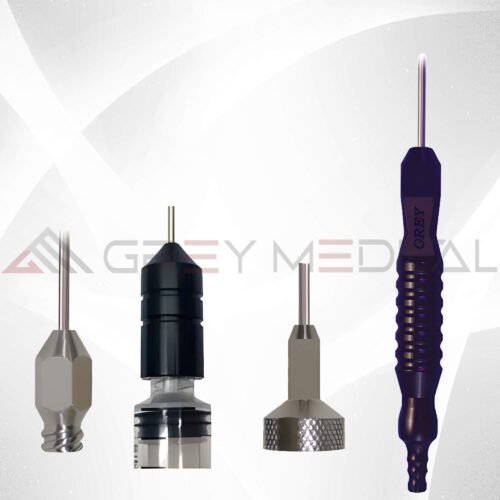Liposuction has become one of the most sought-after cosmetic procedures worldwide, offering patients a way to reshape and contour their bodies. The success of this procedure relies not only on the surgeon's expertise but also on the quality and variety of instruments used. This blog will discuss the essential liposuction instruments, their features, and how they contribute to achieving excellent surgical outcomes.
What Are Liposuction Instruments?
Liposuction instruments are specialized tools used to remove excess fat deposits from various areas of the body. These instruments, ranging from cannulas to handles and auxiliary tools, are designed to ensure precision, minimize tissue damage, and enhance patient comfort. They are crafted from high-quality materials to withstand the rigorous demands of surgery while maintaining sterility and durability.
Key Liposuction Instruments
Liposuction Cannulas:
Cannulas are the primary instruments used to extract fat during liposuction. These slender, hollow tubes come in various sizes and designs, including blunt-tip, sharp-tip, and microcannulas, each tailored to specific procedural needs. Cannulas often feature strategically placed openings to ensure even fat removal and minimize trauma to surrounding tissues.
Luer Lock Handles:
Handles, such as the Liposuction Cannula Handle with Luer Lock, provide a secure grip and allow precise control of the cannula. Ergonomically designed handles reduce hand fatigue during lengthy procedures and ensure smooth manipulation for uniform fat extraction.
Fat Injection Guns:
For procedures involving fat grafting, fat injection guns are essential. These tools enable surgeons to reintroduce harvested fat into target areas with precision, ensuring natural-looking results and uniform distribution.
Accelerator Cannulas:
Specialized cannulas, like the Accelerator III Liposuction Cannula, feature unique hole patterns and shapes that optimize fat removal efficiency. These cannulas are ideal for handling larger volumes of fat and reducing surgical time.
Accessory Tools:
Additional instruments such as tissue separators, aspirators, and infiltration systems enhance the liposuction process. Tissue separators help loosen fat deposits, while infiltration systems ensure effective delivery of anesthetic solutions.
Benefits of High-Quality Liposuction Instruments
Precision and Control:
High-quality instruments ensure precise fat removal, allowing surgeons to achieve desired contours with minimal damage to surrounding tissues.
Reduced Trauma:
The smooth design and specialized features of modern liposuction tools help minimize bruising, swelling, and patient discomfort during and after the procedure.
Enhanced Efficiency:
Innovative instruments like multi-holed cannulas and ergonomic handles streamline the procedure, reducing surgical time and improving outcomes.
Versatility:
A wide range of instrument sizes and designs enables surgeons to customize their approach for different body areas and patient needs.
Durability and Sterilization:
Crafted from medical-grade stainless steel or lightweight aluminum, liposuction instruments are built to last and withstand repeated sterilization.
Maintenance and Care of Liposuction Instruments
Proper maintenance is critical to ensure the longevity and performance of liposuction instruments. Regular cleaning, inspection, and adherence to sterilization protocols prevent contamination and maintain their effectiveness. Storing instruments in protective cases further prevents damage during handling and transport.
Conclusion
The quality of liposuction instruments plays a crucial role in the success of this popular cosmetic procedure. From cannulas to handles and fat injection tools, these instruments empower surgeons to deliver precise, efficient, and safe results.
Investing in high-quality, durable, and ergonomically designed liposuction instruments not only enhances patient satisfaction but also reinforces a surgeon's reputation for excellence. As technology continues to evolve, so will the tools that make liposuction an art of precision and transformation.





Comments